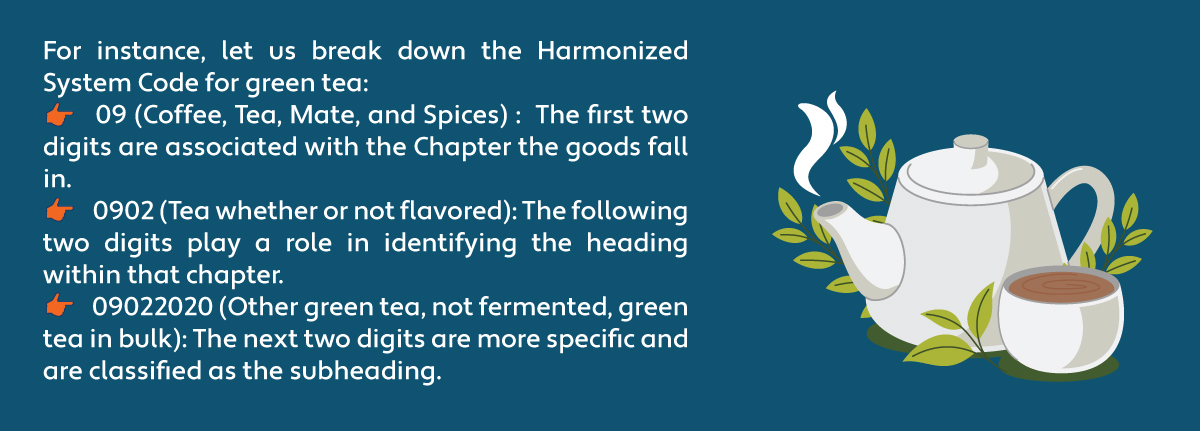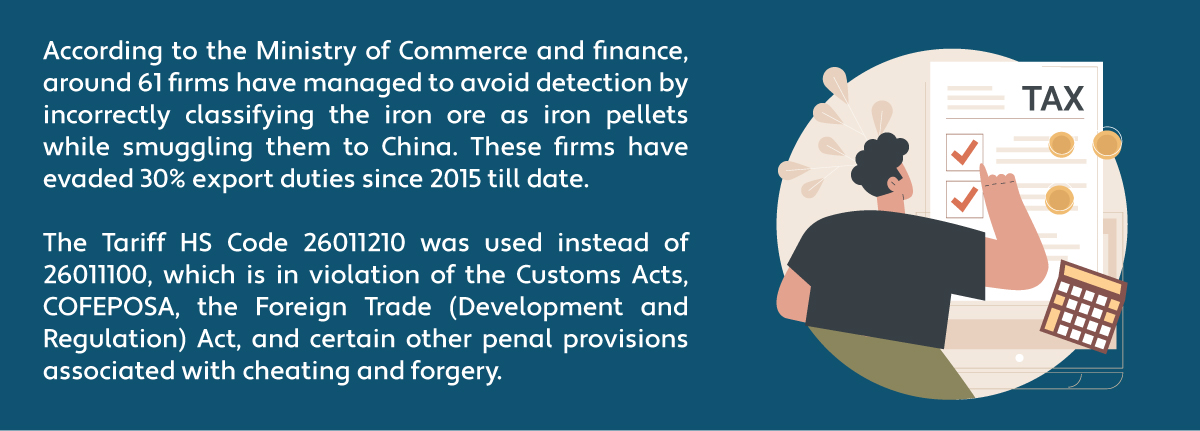-Codes-for-Indian-Businesses.jpg)
The Importance of Harmonized System (HS) Codes for Indian Businesses
Globalization has led to a steady increase in the overall number of goods being traded. According to the Ministry of Commerce and Industry in February 2022, India’s overall exports of merchandise and services are estimated at USD 57.03 Billion, and the overall imports are estimated at USD 69.35 Billion. The implementation of the Harmonized System Codes makes it possible to keep track of the exponential value of imports and exports faced in countries like India. It prevents firms or individuals from undervaluing their goods to escape taxation. This can affect the revenue system of low-income countries that survive on the export and import of goods.
The increase of cross-border fraud cases documented by the World Bank by individuals and firms alone has led to an interest in the digitization of cross-border trade. According to a World Bank report, well-connected firms in Tunisia have undervalued their imports and evaded $1.2 billion in tariffs. Thus, integrating digital technologies will help enhance the operational efficiency and the quality of information available in the trade transactions conducted.

What is an HS Code?
The Harmonized System (HS) Code can also be referred to as the tariff code. This refers to the standard universal process of classifying your traded products.HS Code is developed by the World Customs Organization (WCO). It covers almost 98% of the goods in the international trade.
The impressive adoption rate by 200+ countries is because of the following benefits it provides-
- Systematic classification of products
- Collection of international trade statistics
- Helps the governments make decisions on future trade policies
- Minimizes the risks involved in custom clearances
Role and Importance of HS Code
The principal function of the Harmonized System Code is to act as a foundation for custom tariffs across the world. However, it also caters to other requirements, such as:
- Helps in the accurate collection of trade statistics.
- Acts as a basis for freight and transport-related tariffs.
- Helps determine the national source of the product.
- Allows governments to decide their trade policies.
- Ensures stringent monitoring of controlled goods like narcotics, endangered species, and chemical weapons.
India Harmonized System Code
India initially implemented a six-digit tariff code. However, two more digits were added to make the code more precise. This HS Code for India is referred to as Indian Trade Classification or Indian Tariff Code (ITC). There are two schedules involved in this system:
- Schedule I for imports comprises 21 sections and 98 chapters. This explains the rules and regulations for importing goods within the country.
- Schedule II for exports comprises 97 chapters and explains the rules and regulations for exporting goods outside the country.
India has been using the HS Code since 1986 to classify goods for Customs and Central Excise. The codes identified for Customs tariff are utilized for GST purposes too. HS Codes remove the need to upload and document the details for various goods, making filing for GST returns easier.

Who needs the HSN Code?
The use of India's Harmonized System Code applies to manufacturers, exporters, and importers even before recognizing GST.
The various ways in which the HSN code is adopted are as follows:
- Traders generally adopt the HSN Codes added in the invoices issued by the manufacturer or suppliers.
- Dealers with an expected turnover of less than 1.5 crore rupees do not need to adopt HSN Codes.
- Businesses with a turnover between 1.5 crore rupees and 5 crore rupees must use two-digit codes for their traded goods.
Where are the codes used?
The different services are classified to ensure optimum measurement of taxation. The codes for services are referred to as Services Accounting Codes or SAC. The HSN Code helps categorize various goods such as animal products, mineral products, and plastic goods to footwear and machinery.
Role and Importance of the Harmonized System Codes for Indian Businesses
Before April 1st, 2021, the businesses or taxpayers having a turnover of less than INR 1.5 crores had no reason to include HSN Codes on the GST invoices. However, from April 1st, 2021, the Indian government announced that taxpayers with 5 crores or more turnover have to include the international six-digit Harmonized System Code. For, taxpayers with a turnover of upto 5 crores similarly must include the four-digit HS Code. The main objective of this move is to make the HS Code more precise and reduce the number of irregular credit claims.
In today’s competitive and complex trade environment, the Harmonized System Codes make the product classifications easier and risk-free for the customs and trade authorities. India uses the eight-digit Indian Tariff Code to conform to national trade requirements. Since its adoption, it has minimized the instances of fraudulent activities.
Example of a tax evasion case in India:

The primary role of the HS Code is its use to compute the claim under Goods and Services Tax (GST). Organizations in India have to specify the correct Harmonized System Code not to overpay or underpay the duty rates.
The Harmonized System Code makes it possible to have GST globally recognized. This means that Indian businesses can easily automate the GST returns and further optimize the process.
Furthermore, the taxpayer need not upload detailed documentation of the goods involved. Optimization of the documentation process helps save time and money.
HSN 2022 Updates in India
The World Customs Organization(WCO) reviews HSN every five years to ensure that all contracting parties are aligned and in accordance with the new system of HSN. The seventh edition of HSN was introduced on 1 January 2022. This new HSN comprised 351 amendments at the six-digit level and covered most goods that moved across borders.
HSN 2022 helps classify several products that came under high-revenue streams and to identify the change in trade patterns. The new HSN helped address the global and social concerns by adopting new conventions and methodology.
- The Basel Convention allocated a new Heading for electrical and electronic waste.
- The Rotterdam Convention assigned new sub-headings in the HS code for specific chemicals controlled under the Chemical Weapons Convention.
- Chapter 21 included new amendments for tobacco and nicotine-based development.
- Drones, also called Unnamed Aerial Vehicles, gained a separate heading to help simplify the classification of aircraft.
- There was also an amendment to the classification of diagnostic test kits to ensure smooth cross-border transportation.
HSN 2022, presented in the Union Budget (2021-2022)has made significant amendments and changes in the goods from the agricultural sector, chemical and machinery sector, wood sector, transport sector, textile sector, and another 56 amendments in other sectors.
For example, in textiles with HSN codes 51-58, 60, 63, and 64, there has been an increase in the GST to about 12% (a significant increase from the previous 5% GST rate). This includes woven as well as knitted fabrics such as curtains, bed linen, saree falls and home furnishings. It also encompasses dyeing services. The same rise in rates applies to footwear having an HSN code 64. The footwear may be valued at or below Rs.1,000 per pair for being under this category.
According to the Act, Customs duty is applicable to any imported goods in India. The classification of the goods is based on understanding the competing tariff headings incorporated in the Act and read with the General Rule of Interpretation. The introduction of new products in the market and an amendment to the current product classifications means that the trader has to cautiously ensure accurate reporting, approximation of the tax rate, claims of exemption, and correct payment of duties or taxes.
Way Forward
Manually assigning the HS Codes may be expensive and time-consuming. Businesses need to familiarize themselves with the codes as improper usage of the codes could lead to wrong tariffs being set by the customs. This would mean an exponential cost increase in the imports and exports cost for the customer. The current advancements in machine learning and artificial intelligence have made automatized Harmonised Code classification a reality for cross-border dealers. In fact, automated classification is more accurate than manual classification and is a powerful tool for businesses.
Let us look at a few guidelines to see whether your business requires automated HS Code classification:
Automated classification is useful if
- Your organization has numerous SKUs to keep track of
- You regularly ship to different countries
- Your products come under the category of high revenue value
Avalara Managed Tariff Code Classification optimizes the classification process through machine learning. This means there will be a significant decrease in the number of manual errors which results in a greater client satisfaction rate in the long run. It also prevents loss of revenue through delays in customer shipments. Reducing timelines is important to stay competitive in today’s digital evolution. The businesses can also focus on scaling their businesses for long-term success rather than wasting time and money hiring a dedicated team or resource for deciphering the HS Code classification.









